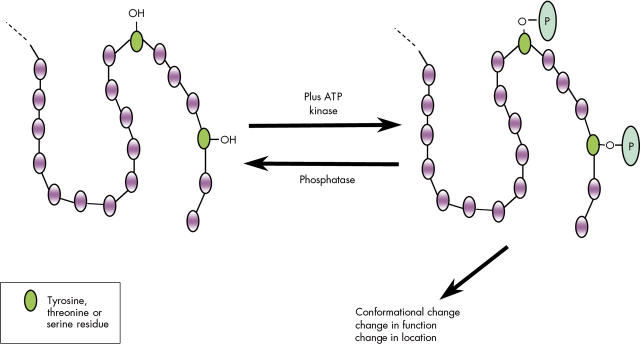Figure 2.
The Yin and Yang of protein phosphorylation. Once the cell perceives an extracellular signal through one of its receptor systems this will lead to a change in kinase activity(ies), and/or a change in phosphatase activity(ies) within the cell. Protein kinases use cellular ATP to donate phosphate groups to endogenous proteins. Consensus sequences within proteins direct kinases to phosphorylate the correct amino acid residue within the substrate protein(s). Conversely, protein phosphatases remove phosphate groups from proteins and hence terminate or limit signals transduced through kinase pathways. In some instances receptors have intrinsic phosphatase, rather than kinase, activity such that ligand binding will lead directly to de-phosphorylation of a protein that is normally constitutively phosphorylated. This will ultimately lead to a change in its function or localisation, which will then culminate in altered cell behaviour.

